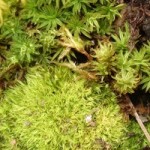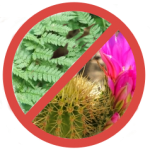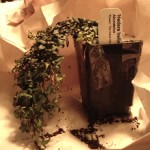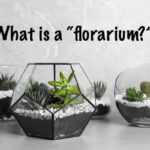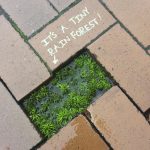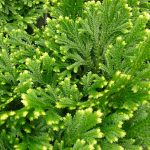Fern Plants
Fern plants are popular terrarium plants. They make a great choice because they generally require less sunlight and like a humid, moist environment. Makes sense when their natural habitat is on the forest floor in areas near water, right?
 Well, this week, I learned that is one generalization about these plants that is decidedly untrue. Ferns can grow in the mountains, on top of trees and even in a dry desert climate. Ferns can be found in moist, shady forests; crevices in rock faces that are shaded from full sun; acidic wetlands (including bogs and swamps) and tropical trees.
Well, this week, I learned that is one generalization about these plants that is decidedly untrue. Ferns can grow in the mountains, on top of trees and even in a dry desert climate. Ferns can be found in moist, shady forests; crevices in rock faces that are shaded from full sun; acidic wetlands (including bogs and swamps) and tropical trees.
I have known that not all ferns have the “look of ferns” with a single long-stemmed branch with pairs of leaves growing along the stem. Some, like my new little heart fern (Hemionitis arifolia) have thin branches with a single heart-shaped leaf at the end.
Believe it or not, there are around 10,560 different species of ferns. Some are invasive species like Giant water fern (salvinia molesta). And, unfortunately, due to over-harvesting or environmental changes; some ferns are on the endangered species list – southern maidenhair fern is listed as endangered here in North Carolina.
Ferns are actually called a cryptic species. They can be morphologically similar to each other but differ enough genetically to prevent interbreeding. What that science-filled plant speak means is that there continues to be some debate on how to classify the different types of ferns.
One noted pteridologist, a fern expert (yes, indeed there’s a name for them), suggests ferns be classified into 4 distinct types:
Psilotopsida – about 92 species of whisk and ophioglossoid ferns
Equisetopdisa – about 15 species of horsetails
Marattiopside – about 150 species
Polypodiopsida – over 9,000 species of leptosporangiate ferns
Most ferns for terrariums are polypodiopsida.
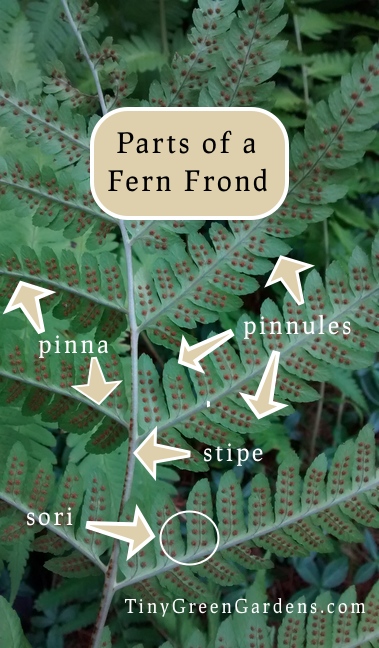
Fern Plants
Ferns are vascular plants but they do not flower or produce seeds.
Botanists have special names for the different parts of ferns. These terms are new to me and hopefully, we’ll be learning something new together today.
The stalks or main branches of ferns are called stipes.
The smaller branches that radiate off of the stipes are called pinna.
The matched leafy part of the fern plants that grow on the pinnae are called pinnules.
Sori (sorus in the singular) form on the understide of the pinnules and are where the spores are made. Sori are typically round in shape but some species have linear sori like the Hart’s tongue ferns which are native to England.
To reproduce, ferns produce spores in the sori. Spores are like seeds that new ferns plants will grow from. Some species can be grown from tubers or rhizomes through division.
Fern Sizes
Mosquito Ferns – The Smallest Fern
The smallest ferns are mosquito ferns. They are aquatic plants that generally only grow a few centimeters across and look a bit more like duckweed or moss than a traditional fern. However, they grow extremely fast – doubling in biomass every 2-3 days.
Mosquito ferns are often used as a bio-fertilizer in rice patties and their high protein content makes them a great food for chickens.
Mosquito ferns are not favored by those evil insects of the same name. In fact, many believe the dense mats that the fern creates on the water surface helps to prevent mosquitos from depositing their eggs in the standing water of the paddies. This tiny fern further frustrates mosquito reproduction by preventing hatching larvae from reaching the water’s surface to breathe.
Norfolk Tree Fern – The Largest Ferns
The largest fern species is the Norfolk Tree fern or smooth tree fern. It has a more traditional fern-like appearance though it can grow as tall as 66 feet. The fronds can grow up to 16 feet.
Commercial Uses of Fern Plants
Ferns are generally not poisonous to humans and they have been used as a food source for 30,000 years. New, spring growth or fiddleheads are considered a gourmet treat. Licorice fern is native to western North America and Native Peoples of both Canada and the United States enjoyed chewing the tasty rhizomes. Ferns have also been used medicinally but not on a commercial scale.
Research is being done on turning mosquito fern into a food crop for both humans and livestock.
Ferns have a natural ability to remove heavy metals, especially arsenic, from the soil. However, I didn’t find a lot of conversation about them being used in large numbers for this purpose. And while not a product man can produce, it is believed that ferns are among the primitive plant remains found in coal.
It would seem, the primary commercial applications for fern plants are the simple pleasure of growing them. (Yay, for us!) Boston ferns commonly grace the porches of homes in the southern United States are probably the largest commercial use of ferns. Ferns are also enjoyed as tropical plants maintained in freshwater aquariums, homes and terrariums.
